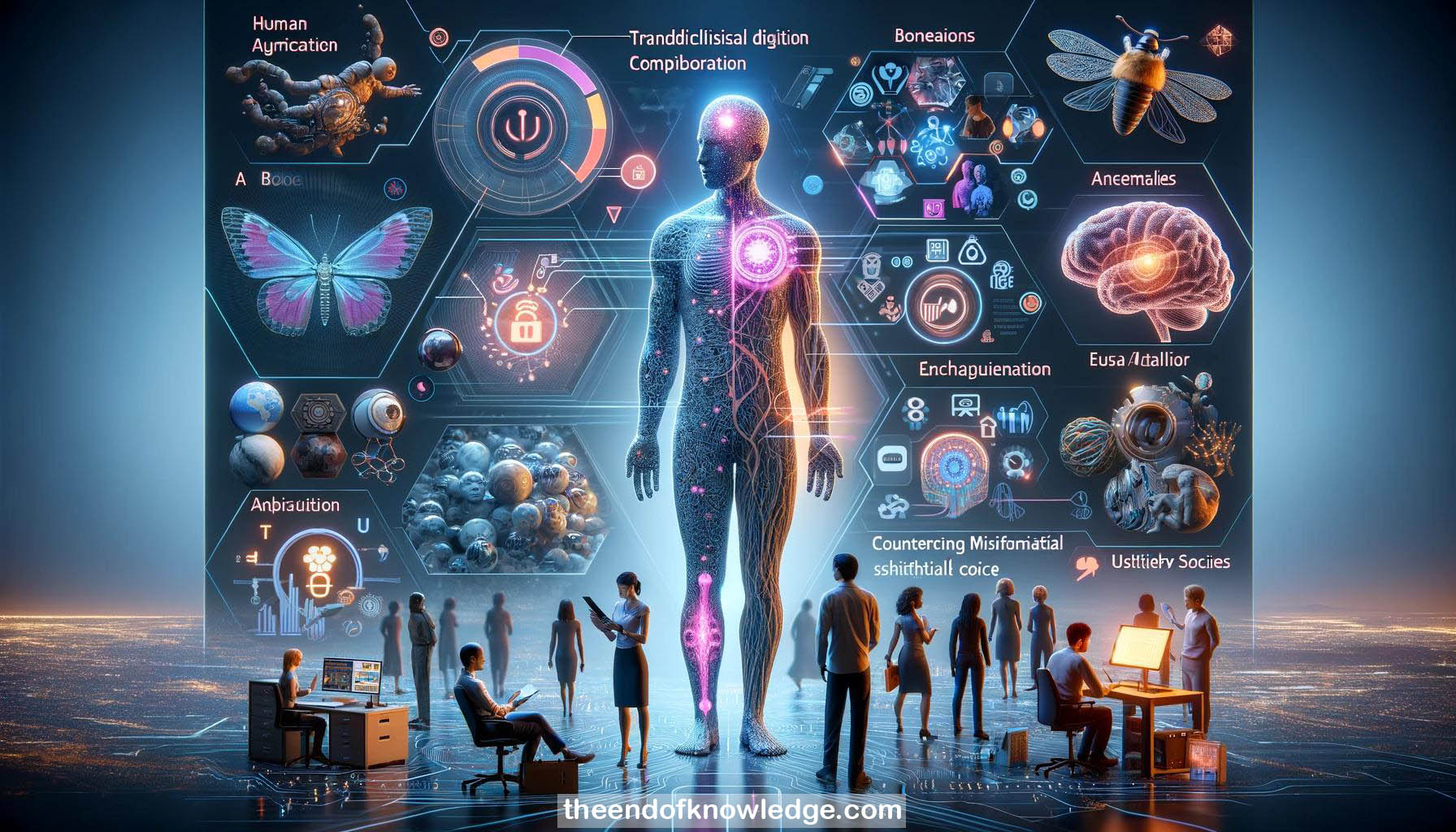 >
>
Concept Graph & Resume using Claude 3 Opus | Chat GPT4o | Llama 3:
Resume:
1.- Pat Pataranutaporn is a researcher at the MIT Media Lab Fluid Interfaces Group studying the intersection of biology and digital computation.
2.- Fluid interfaces aim to seamlessly integrate technology with the human body and cognition to empower rather than overshadow the user.
3.- AI is explosively growing and connected to many disciplines. Wearable AI allows AI to live symbiotically with the human body.
4.- Example projects include AI as a mentor in wearables, AI representing different versions of oneself, and AI to reason better.
5.- The idea of wearable AI/cyborgs has long existed in the imagination, but is now becoming more plausible with advancing technology.
6.- The most primitive wearable augmentation is clothing. New technologies add computational capabilities to this basic human augmentation.
7.- Creators are often the first users of their technologies. User studies provide insights on how others perceive and use them.
8.- Ethical considerations are critical, examining personal, community, global scales for unintended consequences. Ongoing conversations and multiple perspectives are essential.
9.- Media portrayals extrapolate wearable AI into utopian and dystopian futures, highlighting potential consequences the creators may not have anticipated.
10.- The goal is technology that supplements and enhances human capabilities, not replaces them. User choice in engaging the technology is key.
11.- Clothing shapes human consciousness by influencing how we think and perceive each other, even if not independently "thinking."
12.- Wearable AI could influence both how others perceive us and how we perceive ourselves. It becomes part of our identity.
13.- Transdisciplinary, not just multidisciplinary, teams are needed to develop wearable AI, including social psychology alongside engineering.
14.- The Media Lab takes an "antidisciplinary" approach, fluidly moving between disciplines and epistemologies to holistically address complex human-technology interactions.
15.- Wearable AI could help achieve the UN SDGs by countering misinformation, encouraging reasoned thinking, and leading to healthier societies.
16.- Governance of AI must evolve alongside the rapid pace of technological development through ongoing two-way dialogues between policymakers and technologists.
17.- The context-dependent use of technology varies significantly between communities and cultures. Participatory design is critical to meet real local needs.
18.- Closing technology gaps requires both short-term solutions and long-term conversations. Dataset bias is a major AI challenge to overcome.
19.- Making AI appear trustworthy in its presentation and actually making the underlying algorithms and data trustworthy are both important.
20.- Interacting with technology that mimics our own communication styles, like accents and vocabulary, may increase human trust in AI.
21.- AI could enable wearables to responsively provide physical comfort, like warmth for a wound or a hug when sensing sorrow.
22.- Pioneer Manfred Clynes said human-technology symbiosis allows us "to think, to feel and to be free" - to be more human.
23.- The goal of human augmentation is to free the mind for greater creativity by automating mundane tasks and enabling better living.
24.- Enhancing human expression through wearable AI ultimately enhances our shared humanity. This is key to accelerating solutions for the SDGs.
25.- The AI for Good Global Summit, led by the ITU and 37+ UN agencies, aims to foster human-centered AI for the SDGs.
Knowledge Vault built byDavid Vivancos 2024